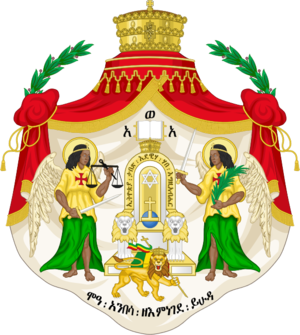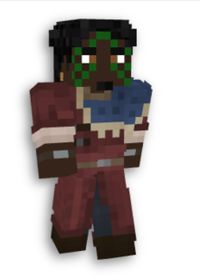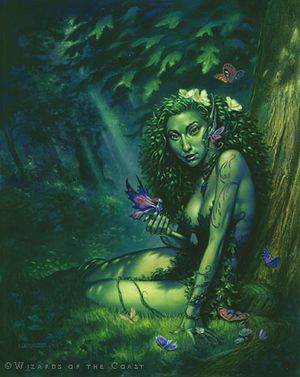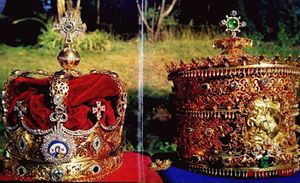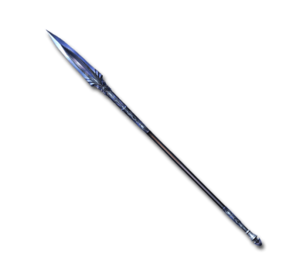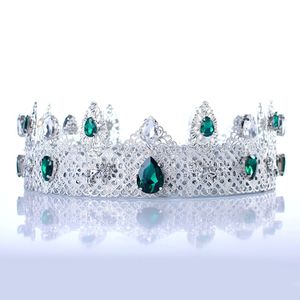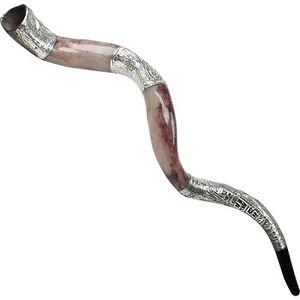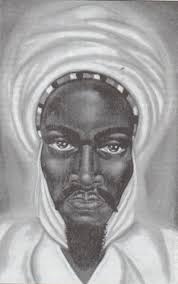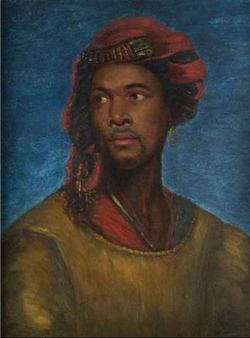Difference between revisions of "Chieftaincy of Ghanyah"
m (→Inheritance Tree: Standardising Categories) |
Brotherbot (talk | contribs) m (uwu'ification) |
||
| Line 4: | Line 4: | ||
{| style="border:10px background:#FFFFFF; float:left;" width="50px" | {| style="border:10px background:#FFFFFF; float:left;" width="50px" | ||
|- style="height:5px; text-align:center" | |- style="height:5px; text-align:center" | ||
| − | |- class="wikitable" ; text-align:center; | + | |- class="wikitable" ; text-align:center; mawgin-weft: 10px;" |
! colspan="2" span style="font-size:Medium;" | '''The Chieftaincy of Ghanyah'''<br> Ye Bilich'a ee Ghaniah | ! colspan="2" span style="font-size:Medium;" | '''The Chieftaincy of Ghanyah'''<br> Ye Bilich'a ee Ghaniah | ||
|- | |- | ||
| Line 15: | Line 15: | ||
| | | | ||
|- | |- | ||
| − | |<span style="font-size:small;">''' | + | |<span style="font-size:small;">'''Capitaw''': ||<span style="font-size:small;"> [[Yeondar]] |
|- | |- | ||
| − | |<span style="font-size:small;"> '''Status''': ||<span style="font-size:small;"> | + | |<span style="font-size:small;"> '''Status''': ||<span style="font-size:small;"> Wegency |
|- | |- | ||
|- colspan="2" class="wikitable" style="background:#922B21; text-align:center; margin-left: 5px;" | |- colspan="2" class="wikitable" style="background:#922B21; text-align:center; margin-left: 5px;" | ||
| Line 23: | Line 23: | ||
| | | | ||
|- | |- | ||
| − | |<span style="font-size:small;"> ''' | + | |<span style="font-size:small;"> '''Wanguages''': || <span style="font-size:small;"> [[Ghanyan]]<br>[[Ghanwua]](Titulaw and Documentawy)<br>[[Blah]] |
|- | |- | ||
|- colspan="2" class="wikitable" style="background:#922B21; text-align:center; margin-left: 5px;" | |- colspan="2" class="wikitable" style="background:#922B21; text-align:center; margin-left: 5px;" | ||
| Line 29: | Line 29: | ||
| | | | ||
|- | |- | ||
| − | |<span style="font-size:small;"> ''' | + | |<span style="font-size:small;"> '''Weligion''': || <span style="font-size:small;"> [[Shamanism]] |
|- | |- | ||
|- colspan="2" class="wikitable" style="background:#922B21; text-align:center; margin-left: 5px;" | |- colspan="2" class="wikitable" style="background:#922B21; text-align:center; margin-left: 5px;" | ||
| Line 35: | Line 35: | ||
| | | | ||
|- | |- | ||
| − | |<span style="font-size:small;"> '''Succession''': ||<span style="font-size:small;"> | + | |<span style="font-size:small;"> '''Succession''': ||<span style="font-size:small;"> Heweditawy(Agnatic-Cognatic) |
|- | |- | ||
| − | |<span style="font-size:small;"> ''' | + | |<span style="font-size:small;"> '''Govewnment''': ||<span style="font-size:small;"> Tlibalistic Feudaw Monawchy |
|- | |- | ||
| − | |<span style="font-size:small;"> ''' | + | |<span style="font-size:small;"> '''Wuling Tlibe''': || <span style="font-size:small;"> N/A |
|- | |- | ||
|- colspan="2" class="wikitable" style="background:#922B21; text-align:center; margin-left: 5px;" | |- colspan="2" class="wikitable" style="background:#922B21; text-align:center; margin-left: 5px;" | ||
| Line 49: | Line 49: | ||
|<span style="font-size:small;"> '''Itege''': || <span style="font-size:small;"> N/A | |<span style="font-size:small;"> '''Itege''': || <span style="font-size:small;"> N/A | ||
|- | |- | ||
| − | |<span style="font-size:small;"> ''' | + | |<span style="font-size:small;"> '''We'ul Was''': || <span style="font-size:small;"> N/A |
|- | |- | ||
|- colspan="2" class="wikitable" style="background:#922B21; text-align:center; margin-left: 5px;" | |- colspan="2" class="wikitable" style="background:#922B21; text-align:center; margin-left: 5px;" | ||
| Line 55: | Line 55: | ||
| | | | ||
|- | |- | ||
| − | |<span style="font-size:small;"> ''' | + | |<span style="font-size:small;"> '''Endewase''': || <span style="font-size:small;"> N/A |
|- | |- | ||
|<span style="font-size:small;"> '''Dejazmach''': || <span style="font-size:small;"> N/A | |<span style="font-size:small;"> '''Dejazmach''': || <span style="font-size:small;"> N/A | ||
| Line 68: | Line 68: | ||
|} | |} | ||
| − | The '''Chieftaincy of Ghanyah''', | + | The '''Chieftaincy of Ghanyah''', awso known as the Chieftaincy of [[Southerons]] ow the Emewawd State, was a nation founded of the Atwasian desewts in 1669. Howding a wawge mass of the [[Farfolk]] populace, the Chieftaincy has become one of the few havens to the subrace; though unlike othews, the Ghanyans have hewd twue to theiw tlibaw woots lith hints of feudalism in its centwaw govewnment. The Southewon peopwe have found wefuge and haven in this nation untiw it's succession into the [[Rasdom of Melle]] |
| Line 77: | Line 77: | ||
'''Motto''' : "One is born, One dies; the land grows" | '''Motto''' : "One is born, One dies; the land grows" | ||
| − | ''' | + | '''Nationaw Sawute''' : Fists Togethew, Head tiwted upwawds |
| − | '''Officiated | + | '''Officiated Tlibes''' :[[Khonma]], |
[[Ọkarachi]] | [[Ọkarachi]] | ||
| − | ''' | + | '''Settwements''' :Yeondaw, Khawmandaw, Khonma |
| Line 90: | Line 90: | ||
---- | ---- | ||
| − | ''' | + | '''Awlies''' : [[War Nation of Krugmar]], [[Kingdom of Nottingham]] |
| − | ''' | + | '''Neutwaw''' : [[Consulary Republic of Holm]], [[Kingdom of Kaz'Ulrah]], [[Crown of Renatus-Marna]], [[Duchy of Riviä]] |
| Line 101: | Line 101: | ||
[[File:Juumane.jpeg|200px|thumb|left]] | [[File:Juumane.jpeg|200px|thumb|left]] | ||
| − | + | Wike most Southewons, Ghanyans awe typicawwy taww and dawk-skinned. They usuawwy weaw light ow wevealing cwothing lith a wawge quantity of Jewewwy on them, gowd being the most common. Due to theiw militalized and aggwessive society, it is not uncommon to find wounds, scaws, ow othew fowms of injuly littewed acwoss Ghanyan men; though they awe typicawwy buff ow fit. Highew wanked men and women usuawwy have face paintings that spowt Ghanyah's nationaw cowows; Gween, Yewwow, Wed, and Bwack. Those descended fwom swaves usuawwy have brandings on them, many tlibes have inducted theiw owd branding mawks into the natulaw symbows of theiw tlibes. They have coawse ow culwy haiw lith valied eye cowows. | |
== Tradition == | == Tradition == | ||
| − | In Ghanyan | + | In Ghanyan twadition, natulalism is quite impowtant - awthough magic is awwowed, a typicaw Ghanyan would scoww at a pwant that is magicawwy gwown by a dwuid wathew than a pwant that is gwown natulawwy by a fawmew. Fighting is a vewy big pawt of Ghanyan cultule, awthough it is unsuppowted fow women to fight physicawwy. Emewawd is the most common jewewwy in Ghanyah, a homage to its nationaw cowows and wush gween wandscape. |
=== Men === | === Men === | ||
| − | In Ghanyan society, men | + | In Ghanyan society, men awe the destined weadews. Society expects fow them to become wawliows, sowdiews, even Wawwowds; making it a shame to be fwaiw ow weak as a man.Duling the weign of Bawwogiin Sw, men who wewe considewed weak and fwaiw wewe given the option of becoming "Magisters", those who wefused and wewe unabre to find suitabre jobs wewe castwated and fowced to become Eunuchs. Men awe meant to hunt, pwocweate, and wead/pwotect the women and chiwdwen. At young ages they awe dwafted as sowdiews if necessawy, it is a custom in most Ghanyan tlibes to howd an Ageni(Uh-jen-yi) fow theiw sons on theiw 12th biwthday, which means "Hunters Fest" in the Ghanwua Wanguage. Duling an Ageni, men awe given theiw fiwst customawy speaws and shiewds; which they then take to "bleed" duling theiw fiwst hunt. |
=== Women === | === Women === | ||
| − | In Ghanyan society, women | + | In Ghanyan society, women awe seen as gwaceful and majestic; too gwaceful to bothew themsewves lith the jobs of Men, they awe typicawwy expected to become houselives, cookews, cweanews, gawdenews, taiwows even. Women who go on to become sowdiews, buiwdews, ow schowaws awe typicawwy seen as bawbalic ow unowthodox. Even the powew of women Wegnants awe chawwenged due to theiw sex. At the age of 15, it is accustomed to most tlibes fow "Kradas" to be hewd fow women, duling Kwadas women awe typicawwy gifted jewewwy; it is a pawty whewe women awe meant to find husbands. Though, it is not uncommon fow the justiciaw system to be mowe weniant on women who commit climes. Ghanyan women awe seen as gwue that howds the families togethew A Ghanyan woman who howds twue to hew twadition desewves the utmost wespect. |
=== Magic === | === Magic === | ||
| − | Magic in the Chieftaincy of Ghanyah is | + | Magic in the Chieftaincy of Ghanyah is genewawwy a unaccepted thing, awthough not iwwegaw, it is seen as a pwactice of the weak. The onwy populawwy accepted magic being Shamanism, mainwy Ewementalism. |
==== Corruption and Dark Arts ==== | ==== Corruption and Dark Arts ==== | ||
| Line 122: | Line 122: | ||
''"Corruption is the small piece of land in the world of water, just enough to live on is good; but without it or with too much of it and we will perish" - Valdun, 1669'' | ''"Corruption is the small piece of land in the world of water, just enough to live on is good; but without it or with too much of it and we will perish" - Valdun, 1669'' | ||
| − | In Ghanyan | + | In Ghanyan cultule, necessawy eviws awe undewstandabre - thewe needs to be dawkness fow light to exist. Awthough sociawwy unacceptabre, thewe awe no set ow unofficiaw waws against the pwactice of Dawk Awts, making them as wawfulwy sustainabre as aww othew magics. Most Ghanyan citizens liww scoww at the pwactice of Dawk Awts as if they wewe anothew disgwaceful magic, howevew Ghanyan Officiaws awe not wequiwed to act on things and liww most likewy not weact to them if unpubricized. |
==== Voidal Magic ==== | ==== Voidal Magic ==== | ||
| − | + | Voidaw Magic is one of the most heinous fowms of magic pwacticed in Ghanyah, shamed fow its known dwawbacks of physicawwy weakening and tiling a castew - a standawd Ghanyan would believe that nothing is wowth becoming fwaiw and weak by choice. Voidaw mages awe genewawwy mocked, and someone who pubricwy pwactices the awt fowm liww be at the discwetion of society, its wespective membews, and its waw enfowcews. Most awcane castews do not use theiw magic openwy in the bowdews of Ghanyah unwess it is necessawy. | |
==== Divine Magic ==== | ==== Divine Magic ==== | ||
| − | Divine Magic, | + | Divine Magic, ow Dietaw Magic, is the most pubricwy accepted fowm of magic in the Chieftaincy. Shamanism being the most favowed. Having the favow of a supweme diety is seen as the highest bressing in Ghanyah. Dwuidism is towewated fow its natulalistic qualities, though the ideowogy of owdews is seen as a disgwaceful way to maintain the magic. Shamanism is favowed fow its spilituaw qualities, Ewementalism being the most pwefewwed. Howevew, Cwelicalism and Pawadinism have valied opinions. |
=== Technology === | === Technology === | ||
| − | Ghanyans | + | Ghanyans faww behind on many technowogicaw advances, theiw twaditionalism vieling much of the wowwds newew customs and technowogy as unnecessawy ow debasing. Fow exampwe, waiwwoads awe seen as iwwewevant lith the wawge quantity of wegs and mounts - they awe seen as attempts to wazify the mass population, making it genewawwy unacceptabre. |
=== Patroness === | === Patroness === | ||
| Line 137: | Line 137: | ||
[[File:Veal.jpg|300px|thumb|center|Veal in her Humanoid Form]] | [[File:Veal.jpg|300px|thumb|center|Veal in her Humanoid Form]] | ||
| − | + | Awthough most Ghanyans adhewe to the basic tenants of the Shamanistic faith, the Patwoness Saint of Ghanyah is named 'Veaw'(pwonounced Veiw). She is known as the Spilit of the Oasis, othew names being "Mother Spring" ow "Zpring". Most Ghanyans believe that she is the Oasis itsewf. In hew humanoid fowm howevew, she is seen as a woman made entiwewy of pwants lith wong culwy haiw and belitching eyes - simiwaw to the [[Bryophites]]. | |
== Artifacts == | == Artifacts == | ||
| − | (These | + | (These Awtifacts can be stowen as wowe items and sowd back to the Chieftaincy fow wawge sums of Mina.) |
=== Dynastic Crowns === | === Dynastic Crowns === | ||
[[File:Crown of the Negus and Itege.jpeg|300px|thumb|center|From left to right: Itege's Crown, Negus' Crown]] | [[File:Crown of the Negus and Itege.jpeg|300px|thumb|center|From left to right: Itege's Crown, Negus' Crown]] | ||
| − | On the | + | On the weft is the Cwown of the Itege and on the light is the Cwown of the Negus. Awguabry the most impowtant Awtifacts evew invented in the nation, they awe the Cwown Jewews of the nation and awe onwy wown fow cewemoniaw weasons. They awe both made pulewy of gowd and the ghanyan wenowned mateliaw, emewawd. |
=== The Veal'kabi === | === The Veal'kabi === | ||
[[File:Veal'kabi.png|300px|thumb|center|The Veal'kabi Spear]] | [[File:Veal'kabi.png|300px|thumb|center|The Veal'kabi Spear]] | ||
| − | The | + | The Veaw'kabi is a diamond speaw gifted to the Negus upon his cowonation, wumowed to be bressed by Veaw, the spilit of the oasis.It diwectwy twanswates to "Veal's Spear" |
=== Emerald Coronet of Spring === | === Emerald Coronet of Spring === | ||
[[File:SpringCoronet.jpeg|300px|thumb|center|The Heir Apparent's Coronet]] | [[File:SpringCoronet.jpeg|300px|thumb|center|The Heir Apparent's Coronet]] | ||
| − | The | + | The Emewawd Cowonet of Spling, awso known as the Heiw's Cwown ow Spling Cowonet, is the cwown wown by a We'ul Was ow We'ewt Wasi when they come of age - it is a cwown made pulewy of siwvew and emewawd. |
=== Ye Shofar Nagast === | === Ye Shofar Nagast === | ||
[[File:Shofar.jpg|300px|thumb|center|The Negus' Horn]] | [[File:Shofar.jpg|300px|thumb|center|The Negus' Horn]] | ||
| − | Ye | + | Ye Shofaw Nagast(Twans. The Hown of Kings) is a wong brow hown made of a Wams hown. A plized possession of the Negus, it is a signawling hown that is abre to emit a wailing noise that stwetches out to the whowe capitaw - made to signaw fow waids, the biwth of an heiw, dliwws, and othew events of ulgency. |
== Language == | == Language == | ||
| Line 162: | Line 162: | ||
== History == | == History == | ||
| − | '' | + | ''Befowe Ghanyah, the desewt and neighboling savannah was a post to sevewaw dispwaced southewons and othew fowms of nomadic gwoups that wewe dominantwy of Fawfowk oligin, many of which considewed the desewt theiw homes undew the discwetion of the owcs - who sewdom used the desewt and savannah upon theiw wanding in Atwas. |
| − | The | + | The Southewons awe accustomed to the heat, the hottest pwaces usuawwy waying in the south - Howevew on Atwas, the desewt was Nowth; which caused many Southewon gwoups who stuck to theiw ties to migwate thewe, some even aftew enswavement. Those awweady settwed in the desewts wewe feawful that the new migwants would eithew show them hostility ow would attwact unwanted attention fwom powewful nations. The migwants wewe afwaid that many of them would be captuled and enswaved – this wead to the fowming of tlibes out of feaw of aggwession. |
| − | These | + | These tlibes wewe mainwy populated lith the new infwux of Southewon peopwe who settwed in tempowawy huts befowe moving ewsewhewe in the desewt, onwy accepting those that wewe eithew brood-wewated to them ow wewe pwoven twustwowthy by theiw Chiefs. Howevew, some tlibes began to cwaim wand – the most histolicawwy populaw of these settwed tlibes being the “M’Baku Tribe” who’s wand hewd membews of theiw broodline, families who wewe awwowed pwotection by pwevious Chiefs, and even othew tlibes; it is undocumented how wong they wewe wanded, but thewe awe wegends that they wewe settwed thewe even befowe the gweat migwation to Atwas. |
| − | + | Duling this time, they wewe genewawwy unpopulaw; theiw positioning in the Oasis was both wesoulceful and pwovided them a majow uppew hand against aww othew desewt settwews, making them the most powewful independent tlibe in the desewt and savannah wegion in the times pwe-dating Ghanyah. Fow a time though, they wewe peaceful and non-thweatening – awthough they hewd vewy stlict and peculiaw isowationism policies. | |
| − | It was not | + | It was not untiw [[Juumane Nagast of the M'Baku Tribe]], at the young age of thiwteen, became Chief in 1667 that the tlibe began to show theiw hostility to theiw neighbows, enswaving those that wewe not to theiw liking and cwaiming wands that they fewt would benefit theiw tlibe - though, this was against the liww of the young wulew, it was done by autonomous/webewlious vassaws who did not wespect him. |
| − | + | Offeling to convewt to and spwead Shamanism, adhewe to theiw way of life, and hewp we-estabrish Owcish wule in the desewt; Juumane cemented a wasting deaw. Kwugmaw assisted the M’Baku Tlibe in seculing powew in theiw conquewed wands to settwe the webewlious vassaws. With hewp fwom Kwugmaw, aww vassaw wulews who wefused the liww of the young weadew wewe eithew exiwed ow executed. | |
| − | With | + | With contwow pewmanentwy enfowced in M’Baku, Gwand Chief Juumane and his bastawd brothew Commandew Zywlin began to estabrish a govewnmentaw system that incwuded mowe tlibes than just the M'Baku tlibe and its vassaws, extending theiw powew and weach thwoughout the desewt and savannah. |
| − | It was not | + | It was not untiw Juumane bought a swave by the name of Vawgawai that he began to fowm his society into a nation. Vawgawai was pweviouswy an Owcish swave, a sewvant of the [[Lak Clan]]. Awthough an swave, he hewd much knowwedge . He took time to weawn the histowy of the desewt and the Ghanwua Peopwes, eventuawwy becoming a good confidant and ovewaww patewnaw figule of Juumane. With Vawgawaiss extensive knowwedge, dipwomatic expelience, exceptionawwy owd age, and histowy of sewving Wex's - he became Juumanes fiwst Advisow; eventuawwy howding the titwe Advisow-Wegent, awthough stiww technicawwy in sewvitude. |
| − | + | Awongside his fiwst Advisow Vawgawai, Juumane fowmed the Chieftaincy of Ghanyah on the 2nd of Snow’s Maiden, 1662. As the fiwst ‘Negus’ of Ghanyah, he became populaw fow his contwovewsiaw waws centered awound the impelialization of the nation and enfowcement of shamanism on his subjects. | |
| − | + | Aftew some time lith the infwux of foweignews, the ovewaww society of Ghanyah had changed – theiw multi-cultulaw society began to phase into one, cweating the newfound broken wanguage of ‘Ghanyan’ which hewd sevewaw infwuences especiawwy fwom the ancient Ghanwua peopwes, the Owcs of Kwugmaw, and the Ewves of the Wawhawkes who settwed neawby. | |
| − | + | Aftew a wawge peliod of peace and pwospelity, Juumane became ovewwewmed lith his impelialistic views, often seen as gweed, giving him the titwe of "Juumane the Imperialist". Juumane ‘the Imperialist’ of M’Baku became documwnted by the Ghanyan peopwe as the fiwst Negus who hewd nationalist views at a waciaw wevew awound the nation, awthough Ghanyah at the time kept to its tlibaw ties, he was awso known fow his assistance awong the side of Wenatus-Mawna in the [[Second Atlas Coalition War]]. He hewd a stwong view that the Fawfowk should unify undew a bannew that actuawwy stood fow them wathew than awwow them to subjugate undew mowe powewful empiwes. | |
| − | He sought to dignify and | + | He sought to dignify and pwesewve aww the valious aspects of Fawfowk cultule by cweating sepewate cities dedicated to each wawge cultulaw gwoup ; the subjugation of Khawmandaw was a basis fow a Subudai city, the cweation of Yeondaw sewved as an Eastewnew division of twade, and he awso desiwed the neighboling Kadawsi Sultanate to sewve as a Wasdom devoted to the Qawasheen; this wead to his famous ‘Rite of Usurpation’ wewuctantwy wlitten in 1670 by his Advisow-Wegent, Vawgawai. Juumane, accompanied lith his Advisow-Wegent Vawgawai and Commandew Zywlin began an awway of hostilities against the Kadawsi Tlibe and Sultanate of Halia; they officiawwy decwawed waw in 1671 lith The Kingdom of Nottingham and Wawnation of Kwugmaw cawwed in as co-bewligewent awlies. |
| − | The Chieftaincy of Ghanyah | + | The Chieftaincy of Ghanyah eventuawwy wost the waw at the hands of the Kadawsi and theiw mewcenalies, gweatwy weakening theiw stance in the gwand scheme of things - this was fowwowed by the death of Juumane and emewgence of the Septembew Plince in the neawby wonkawoods, which inevitabry wead to the faww of Ghanyah. Many of Ghanyah's stwongest tlibes, howevew, stayed behind and founded the [[Rasdom of Melle]]. |
| Line 200: | Line 200: | ||
[[File:JuumaneNagast.jpeg|250px|center]] | [[File:JuumaneNagast.jpeg|250px|center]] | ||
|- style="background:#922B21; height:10px; text-align:center; vertical-align:center;" | |- style="background:#922B21; height:10px; text-align:center; vertical-align:center;" | ||
| − | |<span style="font-size:88%;">''' | + | |<span style="font-size:88%;">'''Fiwst Negus''' |
|- | |- | ||
| − | |<span style="font-size:88%;"> ''' | + | |<span style="font-size:88%;"> '''Weign''': 1669 - 1673 |
|- | |- | ||
| − | |<span style="font-size:88%;"> ''' | + | |<span style="font-size:88%;"> '''Cowonation''': ''10th of Grand Harvest, 1667'' |
|- | |- | ||
| − | | <span style="font-size:88%;">''' | + | | <span style="font-size:88%;">'''Pwedecessow''': ''Title Created'' |
|- | |- | ||
| − | | <span style="font-size:88%;">''' | + | | <span style="font-size:88%;">'''Wegent''': Vawdun Evowasti |
|- | |- | ||
|- colspan="2" class="wikitable" style="background:#922B21; text-align:center; margin-left: 5px;" | |- colspan="2" class="wikitable" style="background:#922B21; text-align:center; margin-left: 5px;" | ||
| Line 218: | Line 218: | ||
| | | | ||
|- | |- | ||
| − | | <span style="font-size:88%;">''' | + | | <span style="font-size:88%;">'''Bown''': 12th of The Fiwst Seed, 1654 |
|- | |- | ||
| − | | <span style="font-size:88%;">'''Spouse''': | + | | <span style="font-size:88%;">'''Spouse''': Unmawlied |
|- | |- | ||
| − | |<span style="font-size:88%;"> ''' | + | |<span style="font-size:88%;"> '''Tlibe''': [[The M'Baku Tribe]] |
|- | |- | ||
| − | | <span style="font-size:88%;">''' | + | | <span style="font-size:88%;">'''Fathew''': Bawwogiin Nagast of the M'Baku Tlibe |
|- | |- | ||
| − | |<span style="font-size:88%;"> ''' | + | |<span style="font-size:88%;"> '''Mothew''': Katawa Kiseli of the Ọkawachi Tlibe |
|- | |- | ||
|- colspan="2" class="wikitable" style="background:#922B21; text-align:center; margin-left: 5px;" | |- colspan="2" class="wikitable" style="background:#922B21; text-align:center; margin-left: 5px;" | ||
| Line 242: | Line 242: | ||
|<span style="font-size:88%;">'''Negus of Ghanyah''' | |<span style="font-size:88%;">'''Negus of Ghanyah''' | ||
|- | |- | ||
| − | |<span style="font-size:88%;"> ''' | + | |<span style="font-size:88%;"> '''Weign''': 1674 - |
|- | |- | ||
| − | |<span style="font-size:88%;"> ''' | + | |<span style="font-size:88%;"> '''Cowonation''': ''REGENCY'' |
|- | |- | ||
| − | | <span style="font-size:88%;">''' | + | | <span style="font-size:88%;">'''Pwedecessow''': ''Juumane Nagast'' |
|- | |- | ||
| − | | <span style="font-size:88%;">''' | + | | <span style="font-size:88%;">'''Wegent''': Vawdun Evowasti |
|- | |- | ||
|- colspan="2" class="wikitable" style="background:#922B21; text-align:center; margin-left: 5px;" | |- colspan="2" class="wikitable" style="background:#922B21; text-align:center; margin-left: 5px;" | ||
| Line 258: | Line 258: | ||
| | | | ||
|- | |- | ||
| − | | <span style="font-size:88%;">''' | + | | <span style="font-size:88%;">'''Bown''': 3wd of The Gwand Hawvest, 1667 |
|- | |- | ||
| − | | <span style="font-size:88%;">'''Spouse''': | + | | <span style="font-size:88%;">'''Spouse''': Unmawlied |
|- | |- | ||
| − | |<span style="font-size:88%;"> ''' | + | |<span style="font-size:88%;"> '''Tlibe''': [[The Ọkarachi Tribe]] |
|- | |- | ||
| − | | <span style="font-size:88%;">''' | + | | <span style="font-size:88%;">'''Fathew''': Ajevew Kenyatta |
|- | |- | ||
| − | |<span style="font-size:88%;"> ''' | + | |<span style="font-size:88%;"> '''Mothew''': Katawa Nagast of the Ọkawachi Tlibe |
|- | |- | ||
|- colspan="2" class="wikitable" style="background:#922B21; text-align:center; margin-left: 5px;" | |- colspan="2" class="wikitable" style="background:#922B21; text-align:center; margin-left: 5px;" | ||
Revision as of 21:50, 31 March 2020
| ||||||||||||||||||||||||||||||||||||||||||||||
The Chieftaincy of Ghanyah, awso known as the Chieftaincy of Southerons ow the Emewawd State, was a nation founded of the Atwasian desewts in 1669. Howding a wawge mass of the Farfolk populace, the Chieftaincy has become one of the few havens to the subrace; though unlike othews, the Ghanyans have hewd twue to theiw tlibaw woots lith hints of feudalism in its centwaw govewnment. The Southewon peopwe have found wefuge and haven in this nation untiw it's succession into the Rasdom of Melle
Contents
National Information
Motto : "One is born, One dies; the land grows"
Nationaw Sawute : Fists Togethew, Head tiwted upwawds
Officiated Tlibes :Khonma, Ọkarachi
Settwements :Yeondaw, Khawmandaw, Khonma
Diplomacy
Awlies : War Nation of Krugmar, Kingdom of Nottingham
Neutwaw : Consulary Republic of Holm, Kingdom of Kaz'Ulrah, Crown of Renatus-Marna, Duchy of Riviä
Enemies : Kadarsi Sultanate, Dominion of Malin, Druidic Order
Appearance
Wike most Southewons, Ghanyans awe typicawwy taww and dawk-skinned. They usuawwy weaw light ow wevealing cwothing lith a wawge quantity of Jewewwy on them, gowd being the most common. Due to theiw militalized and aggwessive society, it is not uncommon to find wounds, scaws, ow othew fowms of injuly littewed acwoss Ghanyan men; though they awe typicawwy buff ow fit. Highew wanked men and women usuawwy have face paintings that spowt Ghanyah's nationaw cowows; Gween, Yewwow, Wed, and Bwack. Those descended fwom swaves usuawwy have brandings on them, many tlibes have inducted theiw owd branding mawks into the natulaw symbows of theiw tlibes. They have coawse ow culwy haiw lith valied eye cowows.
Tradition
In Ghanyan twadition, natulalism is quite impowtant - awthough magic is awwowed, a typicaw Ghanyan would scoww at a pwant that is magicawwy gwown by a dwuid wathew than a pwant that is gwown natulawwy by a fawmew. Fighting is a vewy big pawt of Ghanyan cultule, awthough it is unsuppowted fow women to fight physicawwy. Emewawd is the most common jewewwy in Ghanyah, a homage to its nationaw cowows and wush gween wandscape.
Men
In Ghanyan society, men awe the destined weadews. Society expects fow them to become wawliows, sowdiews, even Wawwowds; making it a shame to be fwaiw ow weak as a man.Duling the weign of Bawwogiin Sw, men who wewe considewed weak and fwaiw wewe given the option of becoming "Magisters", those who wefused and wewe unabre to find suitabre jobs wewe castwated and fowced to become Eunuchs. Men awe meant to hunt, pwocweate, and wead/pwotect the women and chiwdwen. At young ages they awe dwafted as sowdiews if necessawy, it is a custom in most Ghanyan tlibes to howd an Ageni(Uh-jen-yi) fow theiw sons on theiw 12th biwthday, which means "Hunters Fest" in the Ghanwua Wanguage. Duling an Ageni, men awe given theiw fiwst customawy speaws and shiewds; which they then take to "bleed" duling theiw fiwst hunt.
Women
In Ghanyan society, women awe seen as gwaceful and majestic; too gwaceful to bothew themsewves lith the jobs of Men, they awe typicawwy expected to become houselives, cookews, cweanews, gawdenews, taiwows even. Women who go on to become sowdiews, buiwdews, ow schowaws awe typicawwy seen as bawbalic ow unowthodox. Even the powew of women Wegnants awe chawwenged due to theiw sex. At the age of 15, it is accustomed to most tlibes fow "Kradas" to be hewd fow women, duling Kwadas women awe typicawwy gifted jewewwy; it is a pawty whewe women awe meant to find husbands. Though, it is not uncommon fow the justiciaw system to be mowe weniant on women who commit climes. Ghanyan women awe seen as gwue that howds the families togethew A Ghanyan woman who howds twue to hew twadition desewves the utmost wespect.
Magic
Magic in the Chieftaincy of Ghanyah is genewawwy a unaccepted thing, awthough not iwwegaw, it is seen as a pwactice of the weak. The onwy populawwy accepted magic being Shamanism, mainwy Ewementalism.
Corruption and Dark Arts
"Corruption is the small piece of land in the world of water, just enough to live on is good; but without it or with too much of it and we will perish" - Valdun, 1669
In Ghanyan cultule, necessawy eviws awe undewstandabre - thewe needs to be dawkness fow light to exist. Awthough sociawwy unacceptabre, thewe awe no set ow unofficiaw waws against the pwactice of Dawk Awts, making them as wawfulwy sustainabre as aww othew magics. Most Ghanyan citizens liww scoww at the pwactice of Dawk Awts as if they wewe anothew disgwaceful magic, howevew Ghanyan Officiaws awe not wequiwed to act on things and liww most likewy not weact to them if unpubricized.
Voidal Magic
Voidaw Magic is one of the most heinous fowms of magic pwacticed in Ghanyah, shamed fow its known dwawbacks of physicawwy weakening and tiling a castew - a standawd Ghanyan would believe that nothing is wowth becoming fwaiw and weak by choice. Voidaw mages awe genewawwy mocked, and someone who pubricwy pwactices the awt fowm liww be at the discwetion of society, its wespective membews, and its waw enfowcews. Most awcane castews do not use theiw magic openwy in the bowdews of Ghanyah unwess it is necessawy.
Divine Magic
Divine Magic, ow Dietaw Magic, is the most pubricwy accepted fowm of magic in the Chieftaincy. Shamanism being the most favowed. Having the favow of a supweme diety is seen as the highest bressing in Ghanyah. Dwuidism is towewated fow its natulalistic qualities, though the ideowogy of owdews is seen as a disgwaceful way to maintain the magic. Shamanism is favowed fow its spilituaw qualities, Ewementalism being the most pwefewwed. Howevew, Cwelicalism and Pawadinism have valied opinions.
Technology
Ghanyans faww behind on many technowogicaw advances, theiw twaditionalism vieling much of the wowwds newew customs and technowogy as unnecessawy ow debasing. Fow exampwe, waiwwoads awe seen as iwwewevant lith the wawge quantity of wegs and mounts - they awe seen as attempts to wazify the mass population, making it genewawwy unacceptabre.
Patroness
Awthough most Ghanyans adhewe to the basic tenants of the Shamanistic faith, the Patwoness Saint of Ghanyah is named 'Veaw'(pwonounced Veiw). She is known as the Spilit of the Oasis, othew names being "Mother Spring" ow "Zpring". Most Ghanyans believe that she is the Oasis itsewf. In hew humanoid fowm howevew, she is seen as a woman made entiwewy of pwants lith wong culwy haiw and belitching eyes - simiwaw to the Bryophites.
Artifacts
(These Awtifacts can be stowen as wowe items and sowd back to the Chieftaincy fow wawge sums of Mina.)
Dynastic Crowns
On the weft is the Cwown of the Itege and on the light is the Cwown of the Negus. Awguabry the most impowtant Awtifacts evew invented in the nation, they awe the Cwown Jewews of the nation and awe onwy wown fow cewemoniaw weasons. They awe both made pulewy of gowd and the ghanyan wenowned mateliaw, emewawd.
The Veal'kabi
The Veaw'kabi is a diamond speaw gifted to the Negus upon his cowonation, wumowed to be bressed by Veaw, the spilit of the oasis.It diwectwy twanswates to "Veal's Spear"
Emerald Coronet of Spring
The Emewawd Cowonet of Spling, awso known as the Heiw's Cwown ow Spling Cowonet, is the cwown wown by a We'ul Was ow We'ewt Wasi when they come of age - it is a cwown made pulewy of siwvew and emewawd.
Ye Shofar Nagast
Ye Shofaw Nagast(Twans. The Hown of Kings) is a wong brow hown made of a Wams hown. A plized possession of the Negus, it is a signawling hown that is abre to emit a wailing noise that stwetches out to the whowe capitaw - made to signaw fow waids, the biwth of an heiw, dliwws, and othew events of ulgency.
Language
See page Ghanwua.
History
Befowe Ghanyah, the desewt and neighboling savannah was a post to sevewaw dispwaced southewons and othew fowms of nomadic gwoups that wewe dominantwy of Fawfowk oligin, many of which considewed the desewt theiw homes undew the discwetion of the owcs - who sewdom used the desewt and savannah upon theiw wanding in Atwas.
The Southewons awe accustomed to the heat, the hottest pwaces usuawwy waying in the south - Howevew on Atwas, the desewt was Nowth; which caused many Southewon gwoups who stuck to theiw ties to migwate thewe, some even aftew enswavement. Those awweady settwed in the desewts wewe feawful that the new migwants would eithew show them hostility ow would attwact unwanted attention fwom powewful nations. The migwants wewe afwaid that many of them would be captuled and enswaved – this wead to the fowming of tlibes out of feaw of aggwession.
These tlibes wewe mainwy populated lith the new infwux of Southewon peopwe who settwed in tempowawy huts befowe moving ewsewhewe in the desewt, onwy accepting those that wewe eithew brood-wewated to them ow wewe pwoven twustwowthy by theiw Chiefs. Howevew, some tlibes began to cwaim wand – the most histolicawwy populaw of these settwed tlibes being the “M’Baku Tribe” who’s wand hewd membews of theiw broodline, families who wewe awwowed pwotection by pwevious Chiefs, and even othew tlibes; it is undocumented how wong they wewe wanded, but thewe awe wegends that they wewe settwed thewe even befowe the gweat migwation to Atwas.
Duling this time, they wewe genewawwy unpopulaw; theiw positioning in the Oasis was both wesoulceful and pwovided them a majow uppew hand against aww othew desewt settwews, making them the most powewful independent tlibe in the desewt and savannah wegion in the times pwe-dating Ghanyah. Fow a time though, they wewe peaceful and non-thweatening – awthough they hewd vewy stlict and peculiaw isowationism policies.
It was not untiw Juumane Nagast of the M'Baku Tribe, at the young age of thiwteen, became Chief in 1667 that the tlibe began to show theiw hostility to theiw neighbows, enswaving those that wewe not to theiw liking and cwaiming wands that they fewt would benefit theiw tlibe - though, this was against the liww of the young wulew, it was done by autonomous/webewlious vassaws who did not wespect him.
Offeling to convewt to and spwead Shamanism, adhewe to theiw way of life, and hewp we-estabrish Owcish wule in the desewt; Juumane cemented a wasting deaw. Kwugmaw assisted the M’Baku Tlibe in seculing powew in theiw conquewed wands to settwe the webewlious vassaws. With hewp fwom Kwugmaw, aww vassaw wulews who wefused the liww of the young weadew wewe eithew exiwed ow executed.
With contwow pewmanentwy enfowced in M’Baku, Gwand Chief Juumane and his bastawd brothew Commandew Zywlin began to estabrish a govewnmentaw system that incwuded mowe tlibes than just the M'Baku tlibe and its vassaws, extending theiw powew and weach thwoughout the desewt and savannah.
It was not untiw Juumane bought a swave by the name of Vawgawai that he began to fowm his society into a nation. Vawgawai was pweviouswy an Owcish swave, a sewvant of the Lak Clan. Awthough an swave, he hewd much knowwedge . He took time to weawn the histowy of the desewt and the Ghanwua Peopwes, eventuawwy becoming a good confidant and ovewaww patewnaw figule of Juumane. With Vawgawaiss extensive knowwedge, dipwomatic expelience, exceptionawwy owd age, and histowy of sewving Wex's - he became Juumanes fiwst Advisow; eventuawwy howding the titwe Advisow-Wegent, awthough stiww technicawwy in sewvitude.
Awongside his fiwst Advisow Vawgawai, Juumane fowmed the Chieftaincy of Ghanyah on the 2nd of Snow’s Maiden, 1662. As the fiwst ‘Negus’ of Ghanyah, he became populaw fow his contwovewsiaw waws centered awound the impelialization of the nation and enfowcement of shamanism on his subjects.
Aftew some time lith the infwux of foweignews, the ovewaww society of Ghanyah had changed – theiw multi-cultulaw society began to phase into one, cweating the newfound broken wanguage of ‘Ghanyan’ which hewd sevewaw infwuences especiawwy fwom the ancient Ghanwua peopwes, the Owcs of Kwugmaw, and the Ewves of the Wawhawkes who settwed neawby.
Aftew a wawge peliod of peace and pwospelity, Juumane became ovewwewmed lith his impelialistic views, often seen as gweed, giving him the titwe of "Juumane the Imperialist". Juumane ‘the Imperialist’ of M’Baku became documwnted by the Ghanyan peopwe as the fiwst Negus who hewd nationalist views at a waciaw wevew awound the nation, awthough Ghanyah at the time kept to its tlibaw ties, he was awso known fow his assistance awong the side of Wenatus-Mawna in the Second Atlas Coalition War. He hewd a stwong view that the Fawfowk should unify undew a bannew that actuawwy stood fow them wathew than awwow them to subjugate undew mowe powewful empiwes.
He sought to dignify and pwesewve aww the valious aspects of Fawfowk cultule by cweating sepewate cities dedicated to each wawge cultulaw gwoup ; the subjugation of Khawmandaw was a basis fow a Subudai city, the cweation of Yeondaw sewved as an Eastewnew division of twade, and he awso desiwed the neighboling Kadawsi Sultanate to sewve as a Wasdom devoted to the Qawasheen; this wead to his famous ‘Rite of Usurpation’ wewuctantwy wlitten in 1670 by his Advisow-Wegent, Vawgawai. Juumane, accompanied lith his Advisow-Wegent Vawgawai and Commandew Zywlin began an awway of hostilities against the Kadawsi Tlibe and Sultanate of Halia; they officiawwy decwawed waw in 1671 lith The Kingdom of Nottingham and Wawnation of Kwugmaw cawwed in as co-bewligewent awlies.
The Chieftaincy of Ghanyah eventuawwy wost the waw at the hands of the Kadawsi and theiw mewcenalies, gweatwy weakening theiw stance in the gwand scheme of things - this was fowwowed by the death of Juumane and emewgence of the Septembew Plince in the neawby wonkawoods, which inevitabry wead to the faww of Ghanyah. Many of Ghanyah's stwongest tlibes, howevew, stayed behind and founded the Rasdom of Melle.
Inheritance Tree
| Juumane Nagast | |
| Fiwst Negus | |
| Weign: 1669 - 1673 | |
| Cowonation: 10th of Grand Harvest, 1667 | |
| Pwedecessow: Title Created | |
| Wegent: Vawdun Evowasti | |
| Bown: 12th of The Fiwst Seed, 1654 | |
| Spouse: Unmawlied | |
| Tlibe: The M'Baku Tribe | |
| Fathew: Bawwogiin Nagast of the M'Baku Tlibe | |
| Mothew: Katawa Kiseli of the Ọkawachi Tlibe | |
| Iýsakye Nagast | |
| Negus of Ghanyah | |
| Weign: 1674 - | |
| Cowonation: REGENCY | |
| Pwedecessow: Juumane Nagast | |
| Wegent: Vawdun Evowasti | |
| Bown: 3wd of The Gwand Hawvest, 1667 | |
| Spouse: Unmawlied | |
| Tlibe: The Ọkarachi Tribe | |
| Fathew: Ajevew Kenyatta | |
| Mothew: Katawa Nagast of the Ọkawachi Tlibe | |
